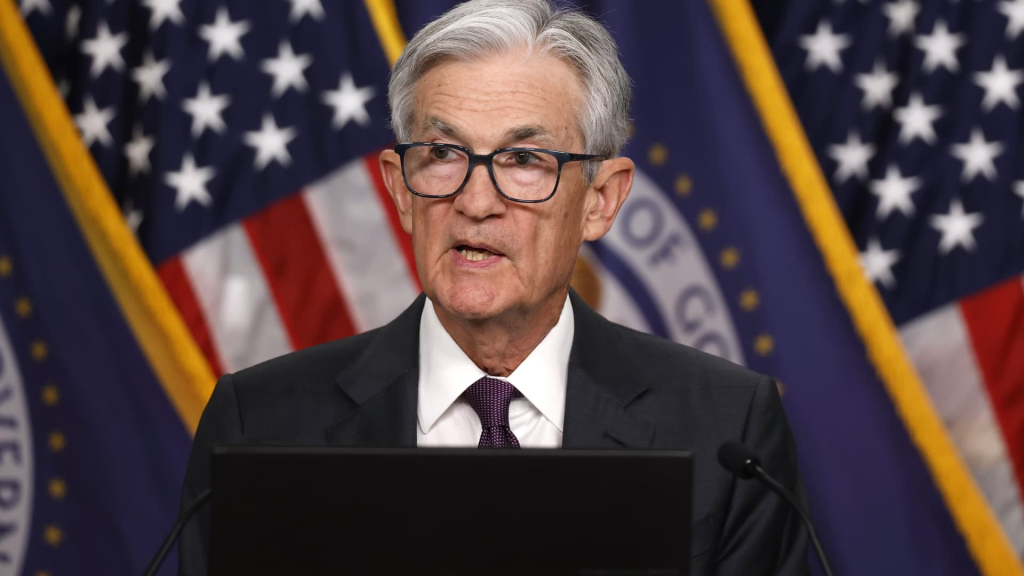WASHINGTON — On Wednesday, the Federal Reserve opted to keep its key interest rate steady as it closely monitors the evolving trade policies under the Trump administration and their implications for an economy showing signs of weakness.
This decision, unsurprising amid the prevailing political and economic volatility, left the Federal Open Market Committee’s benchmark overnight borrowing rate unchanged at a range of 4.25%-4.5%, a level it has maintained since December.
In its post-meeting statement, the Fed highlighted the current economic turbulence and its influence on policy considerations.
“Uncertainty about the economic outlook has increased further,” the statement indicated. “The Committee is attentive to the risks on both sides of its dual mandate, and has concluded that the chances of increasing unemployment alongside rising inflation have also escalated.”
Notably, the statement did not specifically address tariffs; however, Fed Chair Jerome Powell is expected to face questions on this topic during his press conference scheduled for 2 p.m. ET.
The challenge of balancing the dual goals of full employment and stable prices has intensified, particularly in light of President Trump’s aggressive tariff initiatives.
The Fed’s acknowledgment that tariffs pose risks of both rising inflation and dwindling economic growth raises concerns of a stagflation scenario, a condition not seen in the U.S. since the early 1980s. This sentiment has influenced investor confidence, as reflected in the S&P 500’s decline from earlier gains while awaiting additional remarks from Powell.
Despite the Fed’s cautious approach, there appears to be a consensus among policymakers that the central bank is currently well-positioned to remain patient as it fine-tunes monetary policy amid a stable economic backdrop.
The Fed’s decision comes as the White House engages in negotiations with key U.S. trading partners during a 90-day period initiated earlier this month. These talks follow Trump’s implementation of a 10% blanket tariff on imports, accompanied by threats of further “reciprocal” duties pending the discussions’ outcomes.
As trade tensions continue to evolve, the U.S. economy reveals mixed signals concerning growth, inflation, and overall sentiment among both consumers and businesses.
For instance, Gross Domestic Product (GDP) experienced a 0.3% contraction in the first quarter, a result of sluggish consumer and government spending alongside a surge in imports before the tariffs took effect. However, many Wall Street economists anticipate a return to positive growth in the second quarter.
The FOMC statement observed that “fluctuations in net exports have influenced the data,” while reiterating that the economy “has continued to expand at a solid pace.”
Job growth remains robust, evidenced by a nonfarm payroll increase of 177,000 in April and an unchanged unemployment rate of 4.2%. This situation provides the Fed some leeway should a further economic downturn occur.
Although inflation rates are trending lower and nearing the Fed’s 2% target, tariffs are likely to induce a temporary surge in prices. Trump has urged the Fed to consider rate cuts in light of easing inflation, with central bank statistics showing headline inflation at 2.3% and 2.6% for the core measure, excluding food and energy.
Yet, the entirety of the economic landscape remains contingent upon the developments surrounding tariffs.
Recent signs of progress in negotiations and a softening stance from the administration have contributed to a rebound in the stock market following concerns raised by Trump’s “liberation day” announcement on April 2. Despite this, business surveys indicate widespread anxiety, as many managers express concerns about supply chain impacts and pricing fluctuations due to the tariffs.
Market expectations regarding Fed actions have been inconsistent as well.
Leading up to Wednesday’s meeting, market pricing reflected nearly no anticipation of a rate cut this week, with less than a 30% likelihood for a reduction in June. The next anticipated cut could occur in July, with traders projecting a total of three cuts this year, although such forecasts may shift following the latest decision.
The unanimous decision to maintain the benchmark rate underscores the Fed’s strategic position. The fed funds rate plays a crucial role in banks’ overnight lending and serves as a foundational component for various consumer debts, including mortgages, auto loans, and credit cards.


























